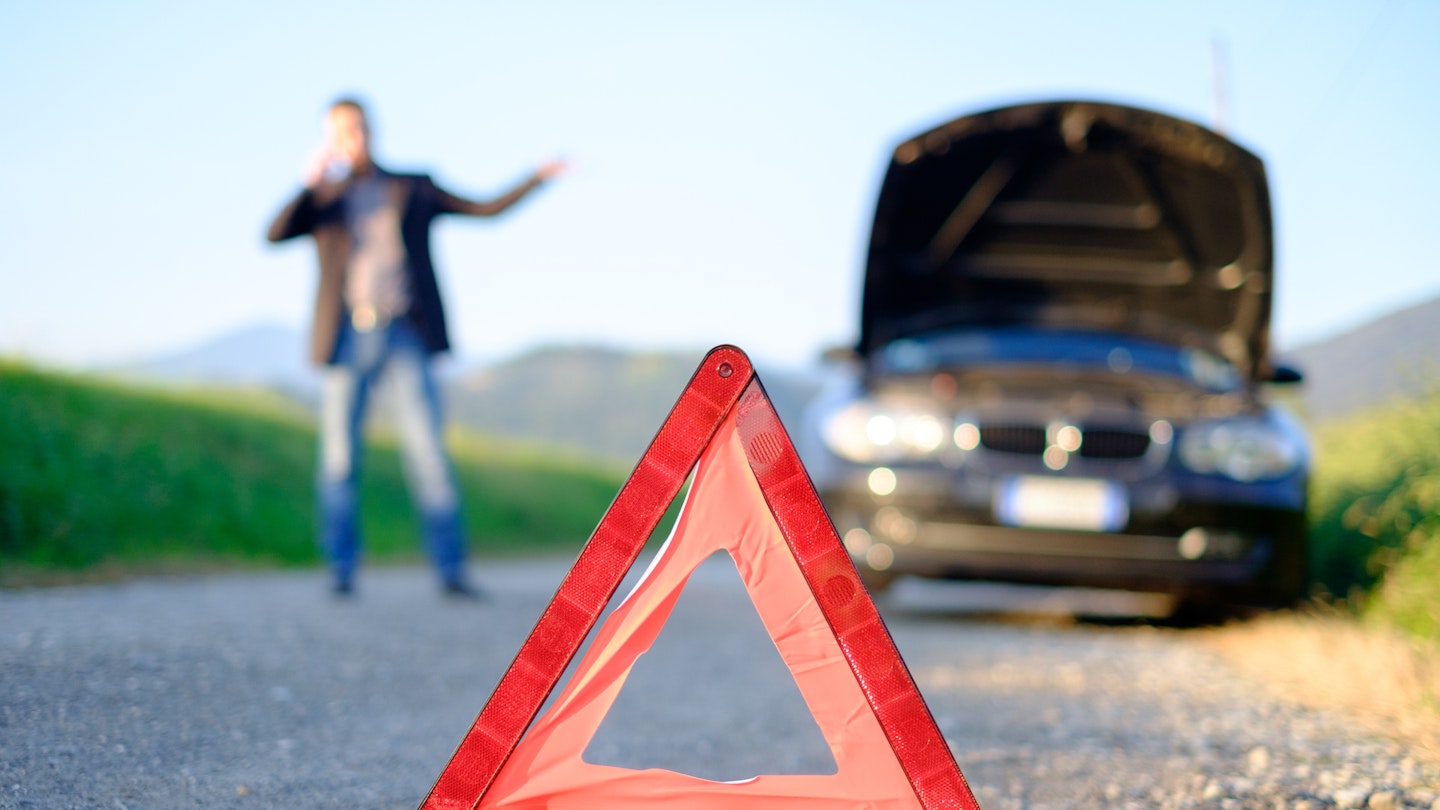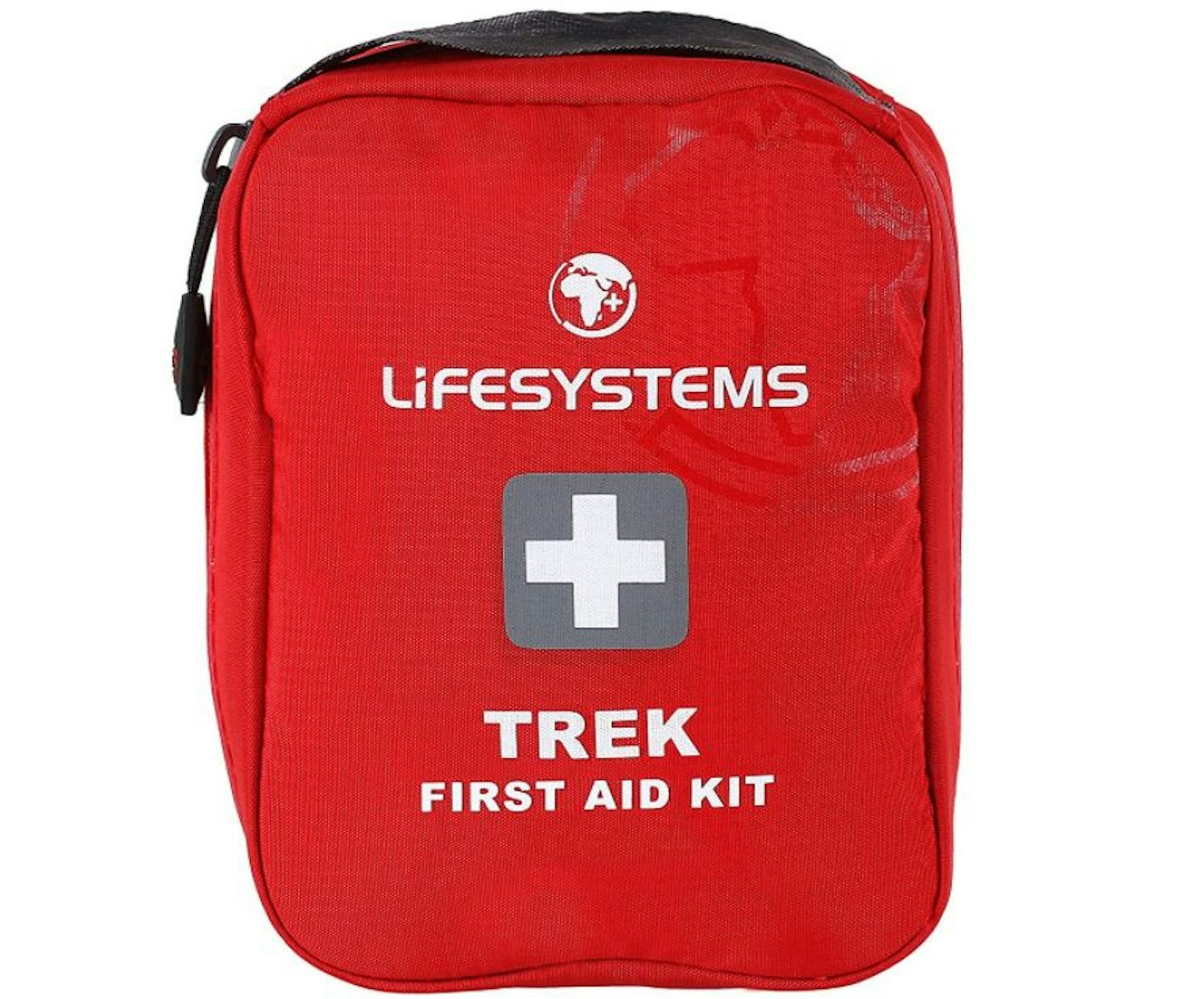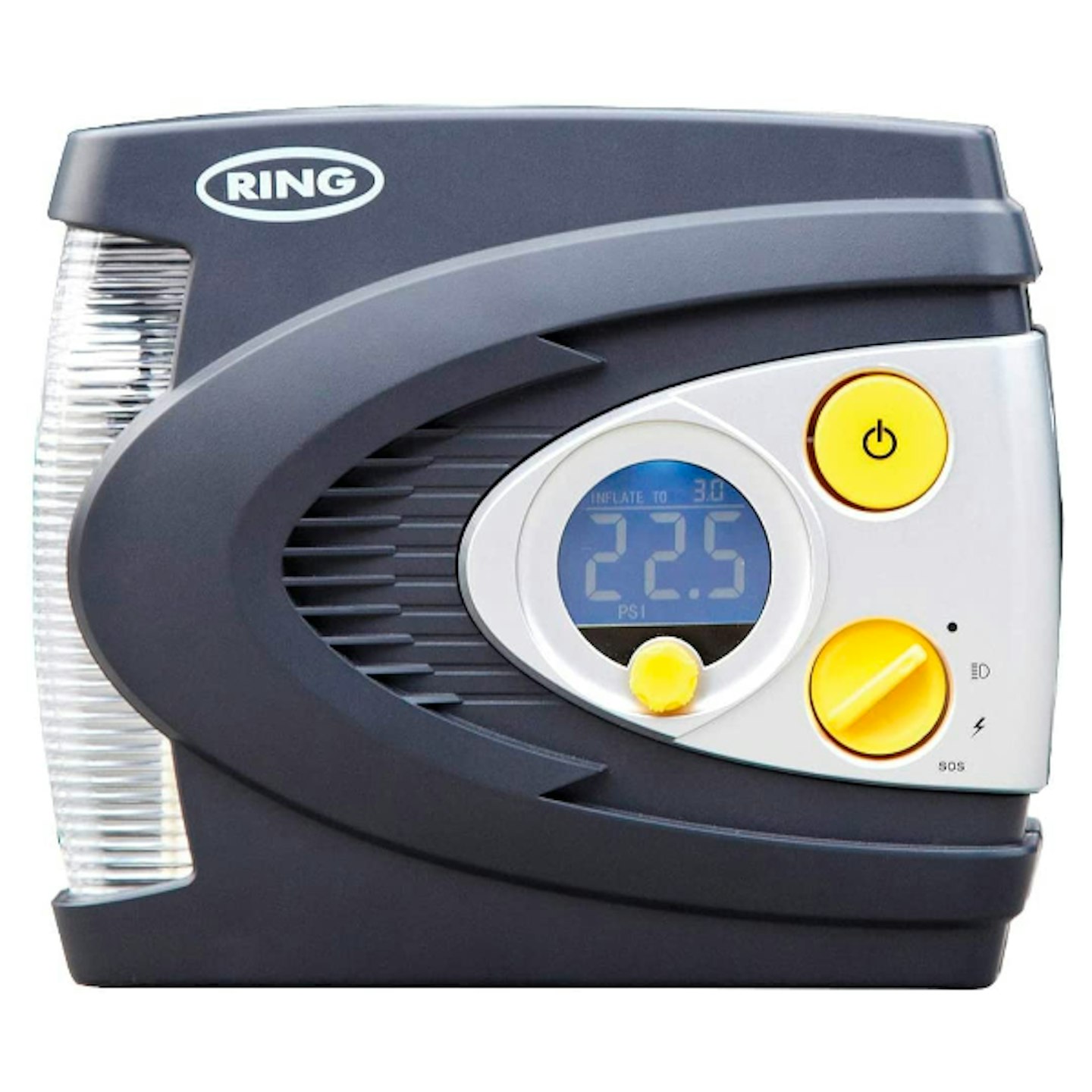Motoring breakdowns are far less common than they used to be but they still occur. And because they're rare they seem extraordinarily ill-timed. But if you think about it for a moment, no breakdown is ever well-timed. Some may be more inconvenient than others, such as conking out on a narrow bridge, but none are welcome.
It depends on what kind of person you are as to how you approach a roadside breakdown: Hissy fits, or a sigh and a shrug. Irrespective of whether you deal with a motoring breakdown like Elton John or the Dalai Lama, having the correct gear makes solving said breakdown easier.
Why do you need an emergency breakdown kit?
Because it may allow you to fix the problem yourself if it's something like a puncture or dead battery, or perhaps stuck in mud or snow (though, be prepared to be laughed at a little for that). In the event of a more serious breakdown occurring, or an accident, an emergency breakdown kit will help you stay safe at the side of the road.
The best emergency breakdown kits
Depending on what car you drive, you might be lucky to have a breakdown warning triangle provided in the boot. But if you're not fortunate to have a factory breakdown warning device, the Be Seen Screen safety banner is a great alternative - and arguably more effective.
I tried out the safety screen on two cars that we performed a quick detailer test on. The Abarth 500 and BMW 5-Series Touring both have different rear-end designs, yet both of them very happily accommodated the safety screen and even from a distance, could be clearly identified as broken-down vehicles.
There are six suction cups on the screen, and rather than having to press down on each one, the screen simply sticks on as soon as you make contact with the vehicle. I found it to be a very simple item to use, and I feel it's more effective than some factory warning triangles.
The only thing I had a gripe with was the packaging. It is compact enough and easy to store when it's rolled up, so you can store it in your boot without taking up much room. However, to pack and unpack, it's a slight faff; I found it slightly tricky to fold away, but this only takes a bit of getting used to.
_Review by Aaron Hussain
_
Pros
- Very easy to stick on, thanks to six suction cups
- A versatile product for almost any vehicle
- Very reflective, which is great news if you break down in low-light conditions
Cons
- A bit of a faff to unpack and put away again
Frankly, there's only a small handful worth recommending because most are rubbish, putting low prices ahead of effectiveness and quality. The kits we think are worthwhile are those from the AA and EVAQ8.
The AA you know and are familiar with; its kit below contains the bits you might actually use. EVAQ8 you may not have heard of but it is a UK emergency supply specialist. No doubt its office is one ginormous hi-vis jacket, but it supplies the NHS and offers some excellent kits. Furthermore, it can even put together a bespoke emergency kit for you.
Editoru2019s pick
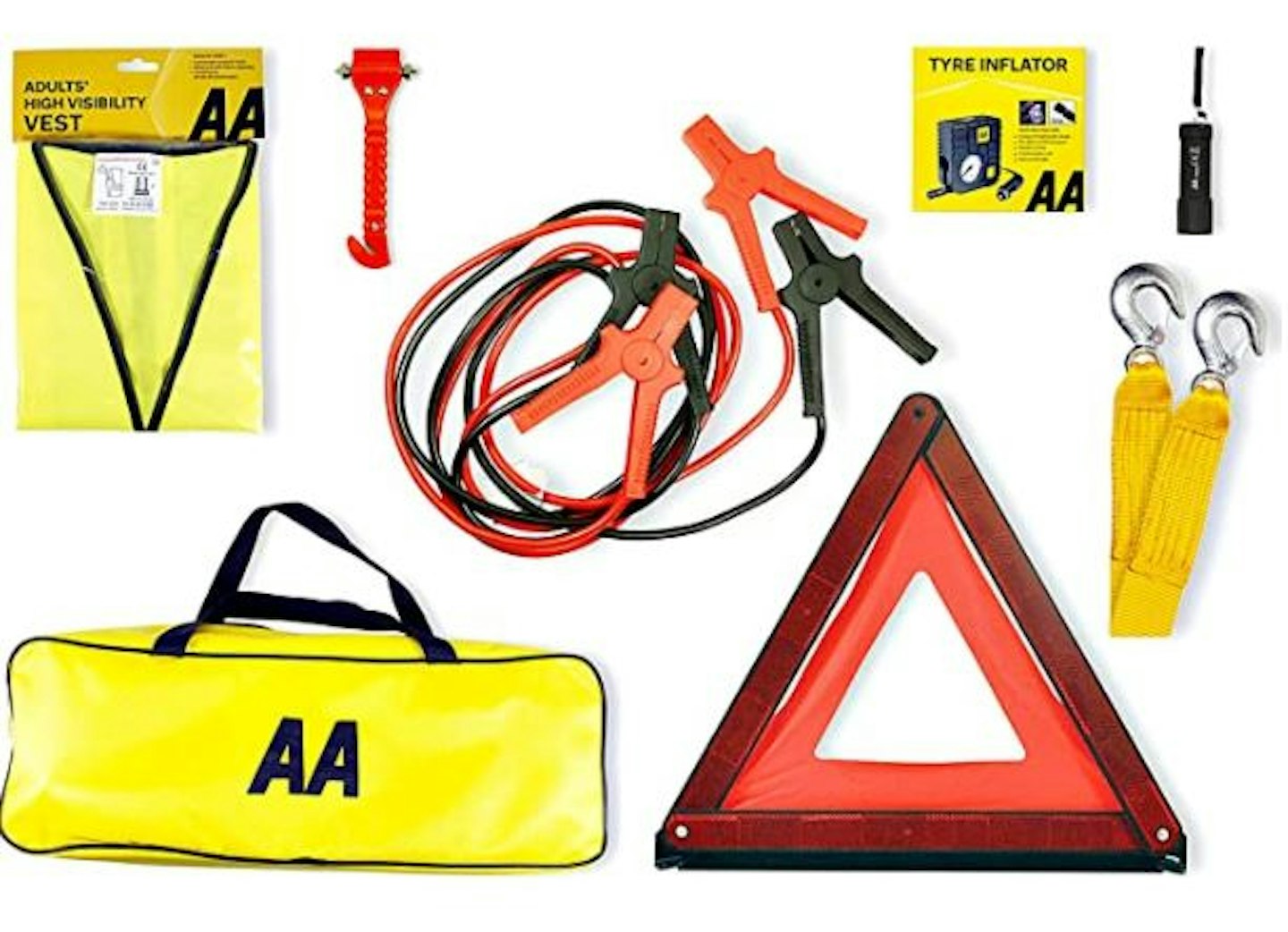
Contents: Jumper cables, warning triangle, tow rope, 12V tyre inflator, glass hammer/seatbelt cutter, torch, hi-vis vest.
There is nothing useless in this AA kit, which is quite refreshing. The tow rope is rated to two tonnes and we like that the jumper cables are a generous three metres. The kit comes with a yellow AA canvas bag to chuck it all in. The only niggle is the torch which needs AAA batteries to run - a USB rechargeable or a dyno unit would be better. You may wish to add a first aid kit too (see below).
Best for first aid
Contents: Fire extinguisher (600g), hi-vis vest, warning triangle, windscreen ice scraper, glass hammer/seat belt cutter, emergency foil blanket, travel first aid kit (Health & Safety Executive approved contents), wind-up LED torch, pair of light-duty work gloves.
Where the AA kit is for tending to breakdowns, this EVAQ8 kit is more for staying safe while waiting for help. Thus, it includes a first aid kit and an emergency blanket. The quality of the gear is fantastic and the bag has Velcro on the base so it sticks to boot carpet. It wouldn't hurt supplementing this kit with a tyre inflator or jump starter, though (see below).
Best for winter
Contents: Thermal blanket, wind-up LED torch, folding shovel, ice scraper, windscreen de-icer spray, hi-vis vest, emergency whistle, long-life drinking water, long-life emergency food ration, first aid kit, two emergency foil blankets, two emergency light sticks, two instant hand warmers, survival bag and backpack.
It's not a kit that's necessary in Basingstoke or Crapstone, for example. Rather, for unfortunate breakdowns in the middle of nowhere up in the wild north. The emergency rations and water are unlikely to be needed, but the rest of the gear certainly may be. As with the EVAQ8 kit above, adding a tyre inflator or jump starter to this kit would be wise.
Other important breakdown gear
While the kits above do well, there are a few small extras we think should be considered in an emergency breakdown kit.
Contents: Primary care leaflet, tweezers, scissors 5.5cm blade, 6 x safety pins, white open woven bandage 7.5cm x 5m, crepe bandage 5cm x 4.5m, 5 x 4-Ply gauze swabs 5 x 5cm, micropore tape 1.25cm x 5m, 4 x hygienic cleansing wipes, 2 pairs vinyl gloves, burn gel sachet, low adherent dressing 5 x 5cm, low adherent dressing 10 x 10cm, sterile adherent dressing, pack of assorted plasters, 2 x blister plasters, small eye pad wound dressing.
A great supplement to the AA kit. This kit is tiny, about the size of three slices of stacked Hovis, and is a more comprehensive first aid kit than those found in the EVAQ8 kits. It's also D of E recommended.
CAR's top-rated jump starter
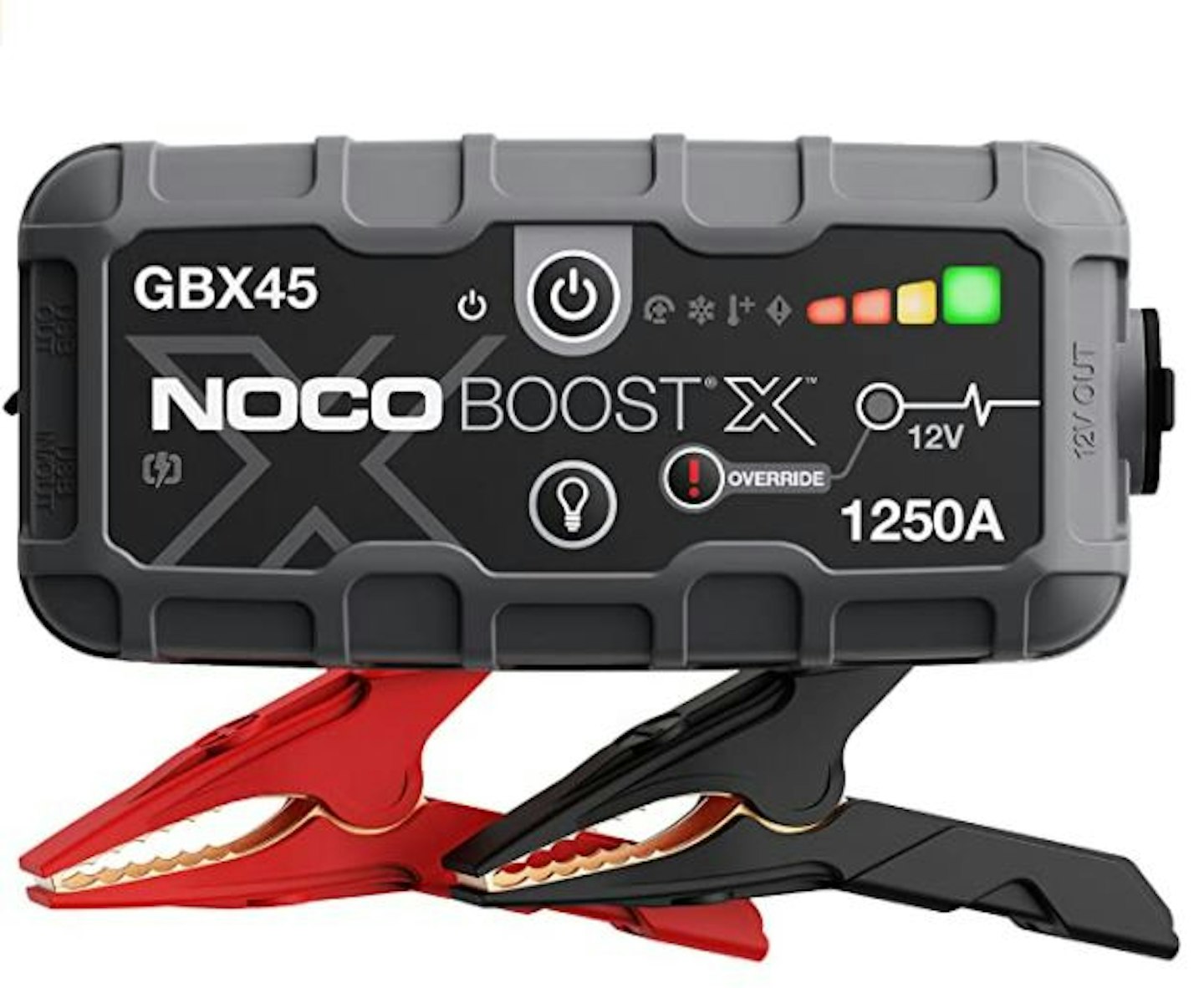
CAR's favourite portable jump starter. It's small (17.3cm x 8.3cm x 5.3cm) and light (1.25kg) but is tough and packs a 1250A wallop. It's therefore capable of jump-starting engines of up to 6.5-litres petrol/4.0-litres diesel. But more than that, it's a power bank that for your devices if needed. The GBX45 recharges via USB and it also features a 100 lumen LED torch too. We like the fact it's so easy and safe for any fool to use, with UltraSafe 2.0 spark-proof design.
CAR's favourite tyre inflator
You don't want flamboyant but flawed characteristics in a tyre inflator; what you want is a Toyota Corolla and this is it. The RAC635 is small (a little bigger than the Lifesystems first aid kit) and plugs into the 12V plug in your car. The digital screen is backlit and allows you to pre-set the desired pressure and will automatically shut off once the device reaches it. There is a cheaper, more basic analogue version called the [RAC610](http://Or https://www.amazon.co.uk/Ring-RAC610-Analogue-Compressor-Inflation/dp/B0030FBSQ2?tag=qcararticle241-21) without the pre-set and auto-shutoff features too if you wish.
Best item for punctures
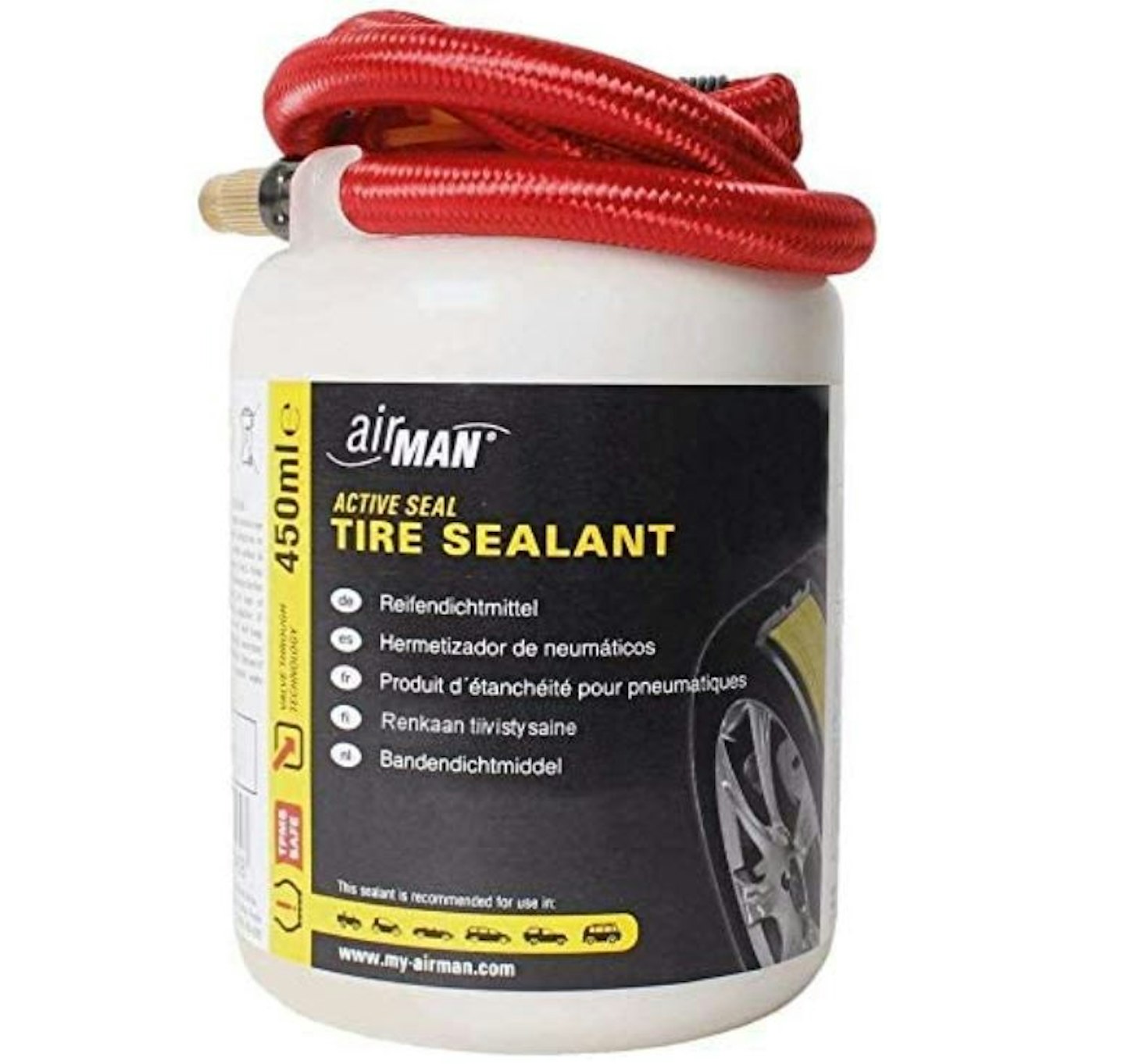
Tyre sealant is incredibly useful in the event of a puncture. It has its limits - a maximum 6mm puncture and drives a maximum of 125 miles on the repaired tyre - but within those limits, it's a godsend. See our full guide for more detail, but in essence, tyre sealant gel is pumped into the tyre by a tyre inflator (any tyre inflator) and seals the puncture. You can then drive a distance to get the tyre repaired or replaced.
This 450ml container is for up to 20-inch rims. A smaller 300ml volume is for up to 17-inch rims, while a larger 620ml volume is for up to enormous 24-inch rims.
